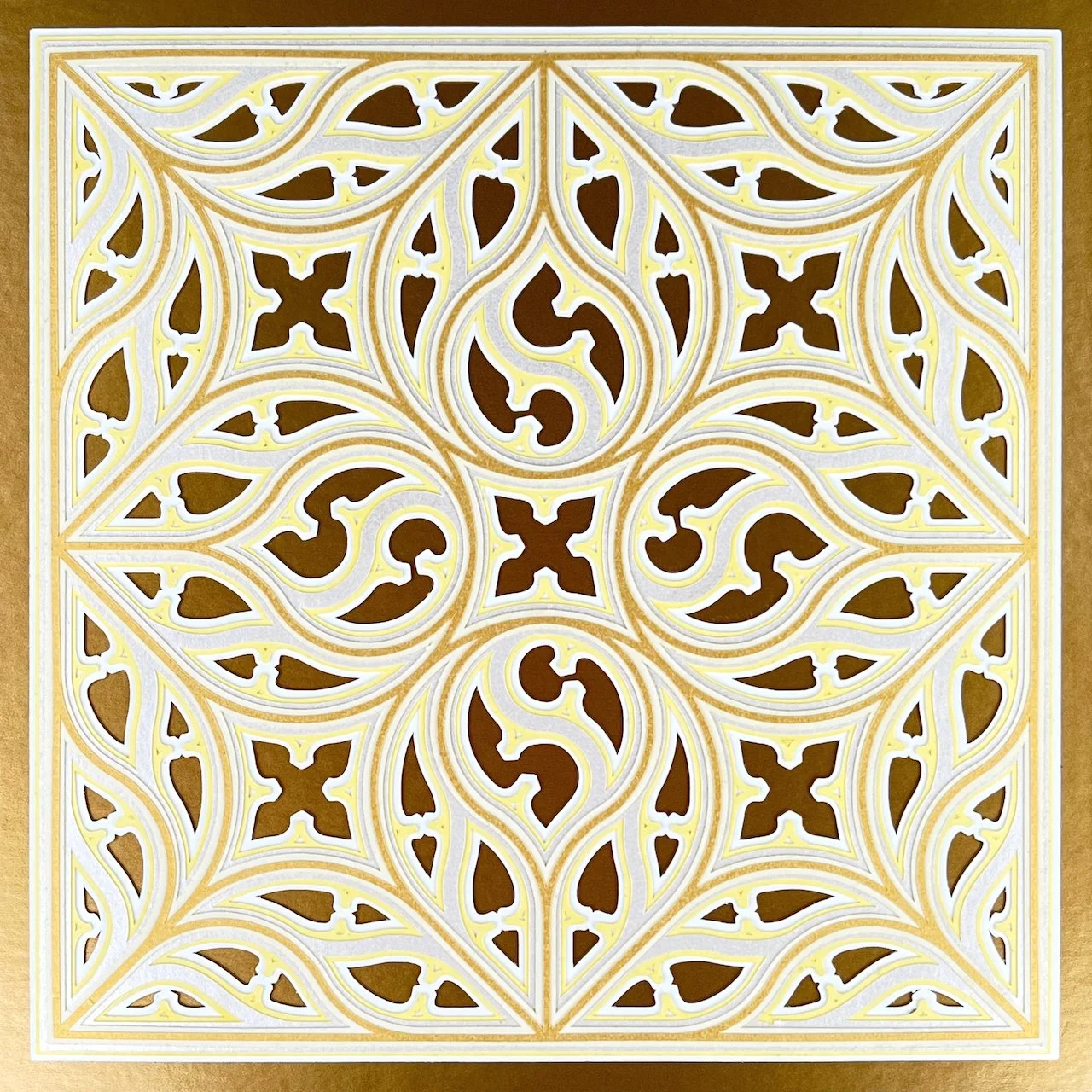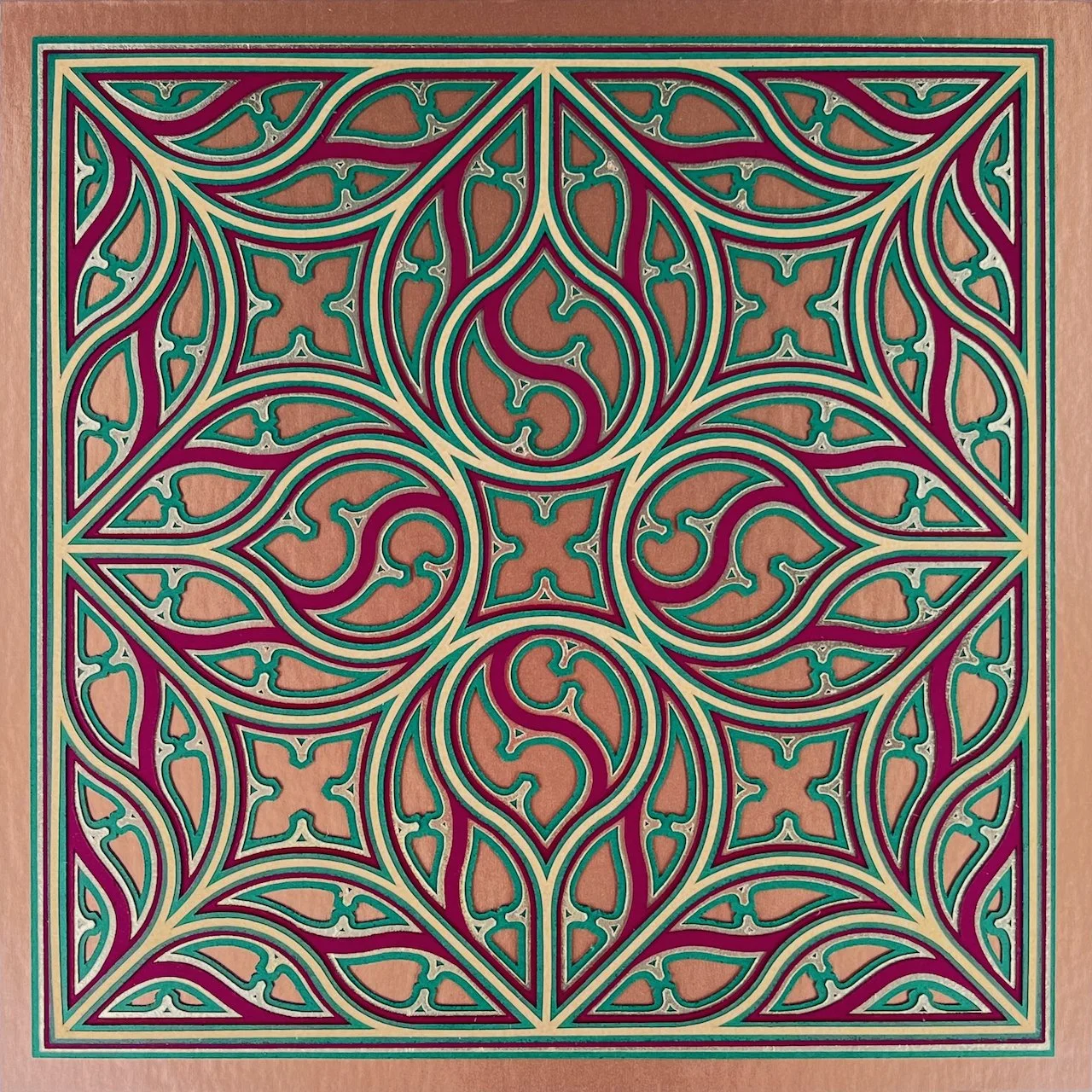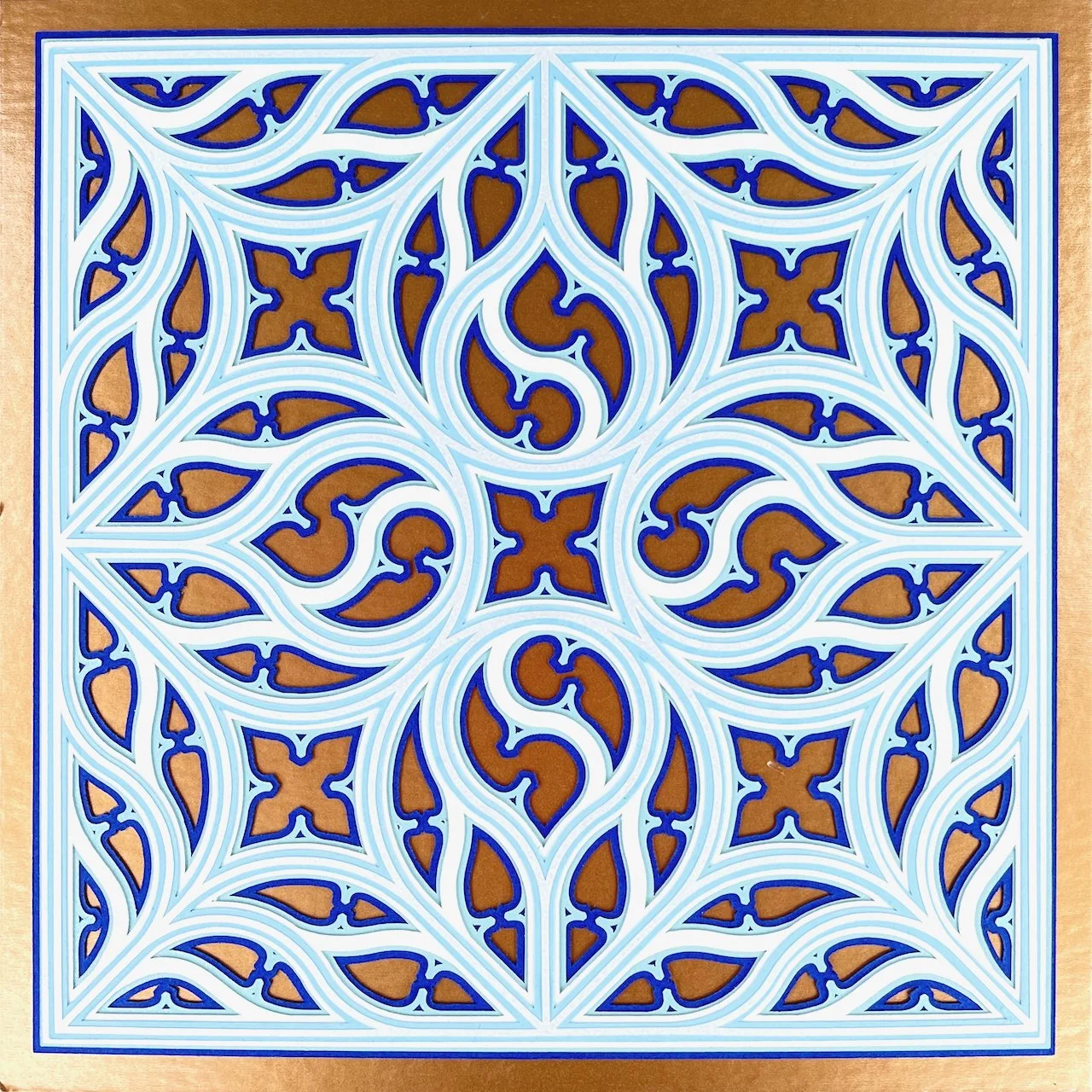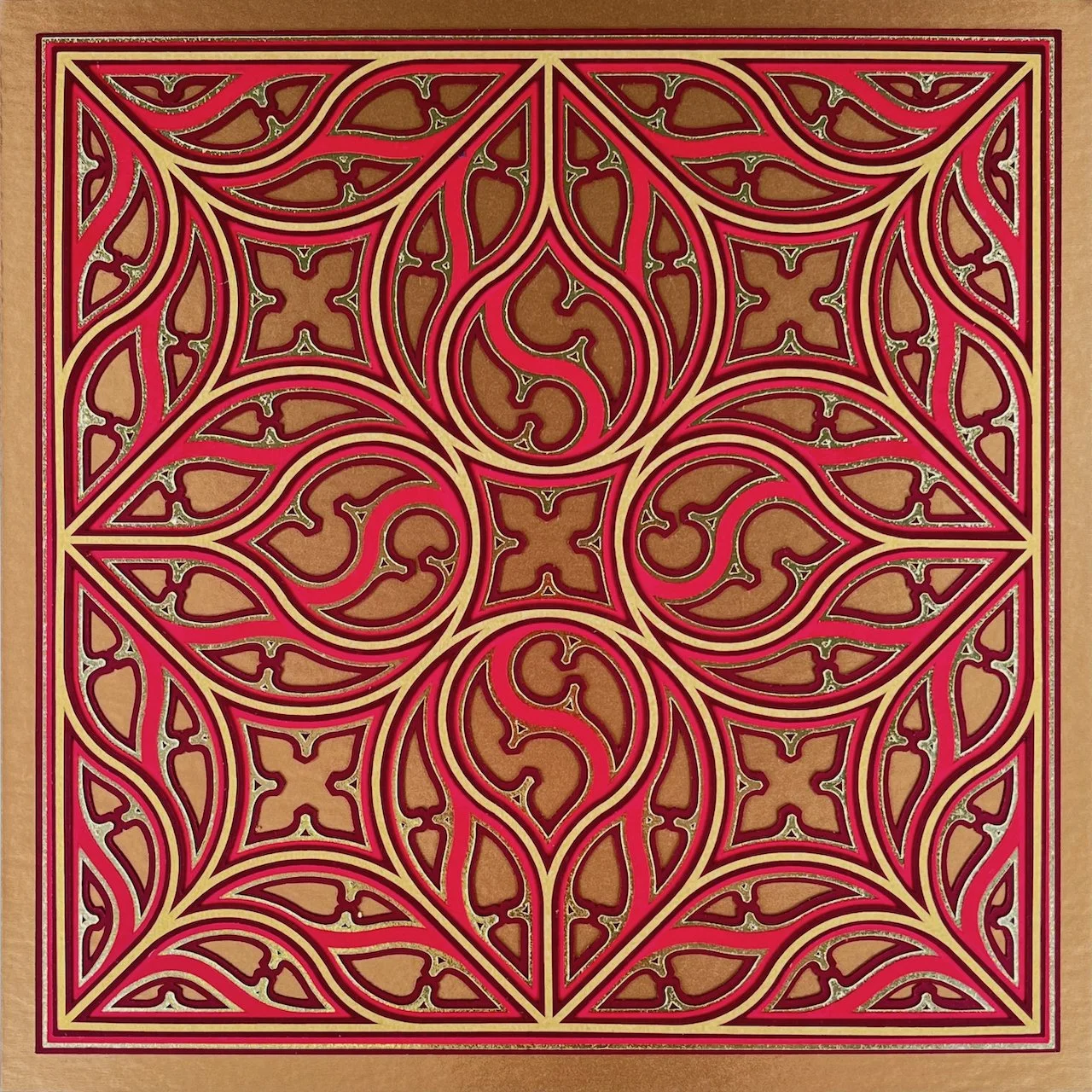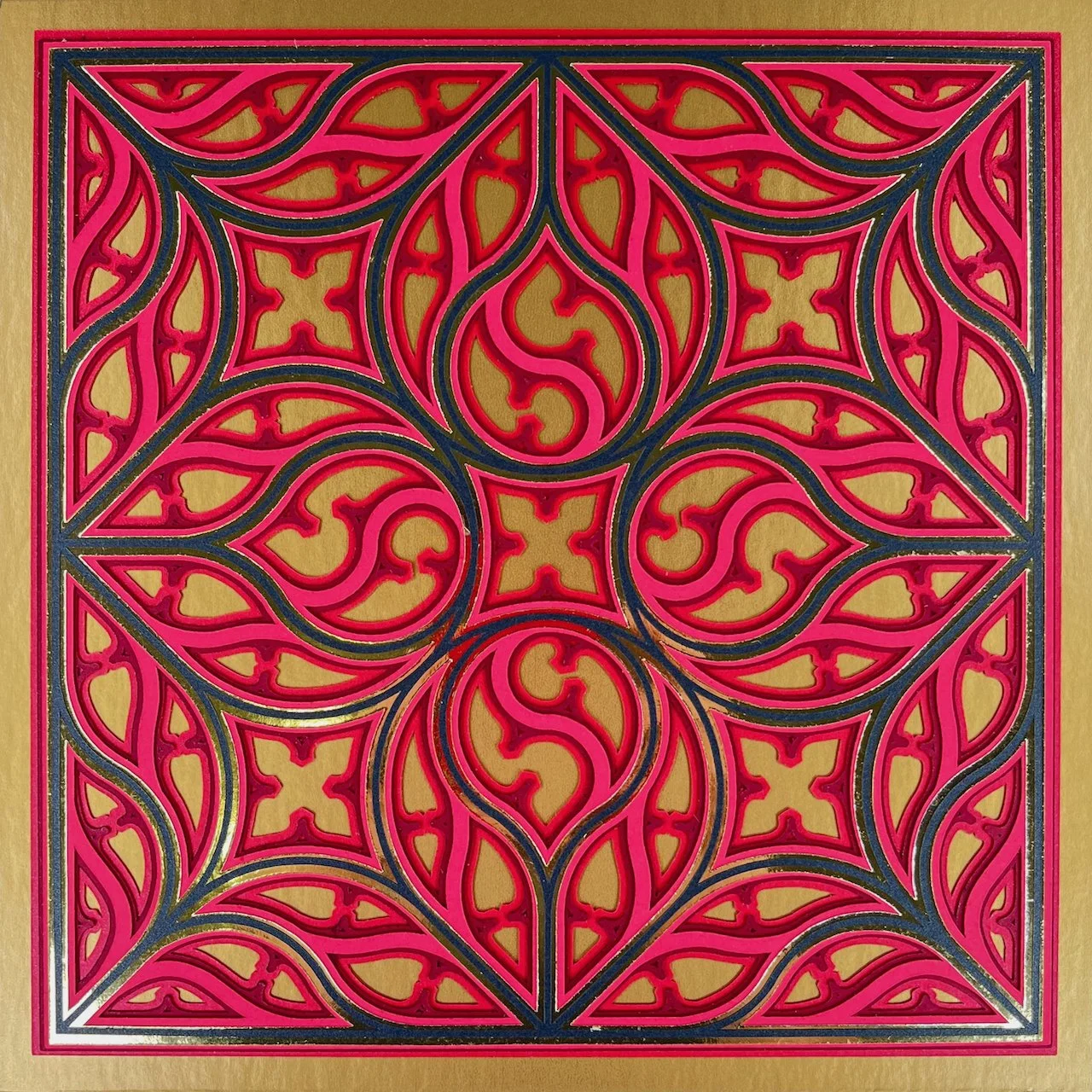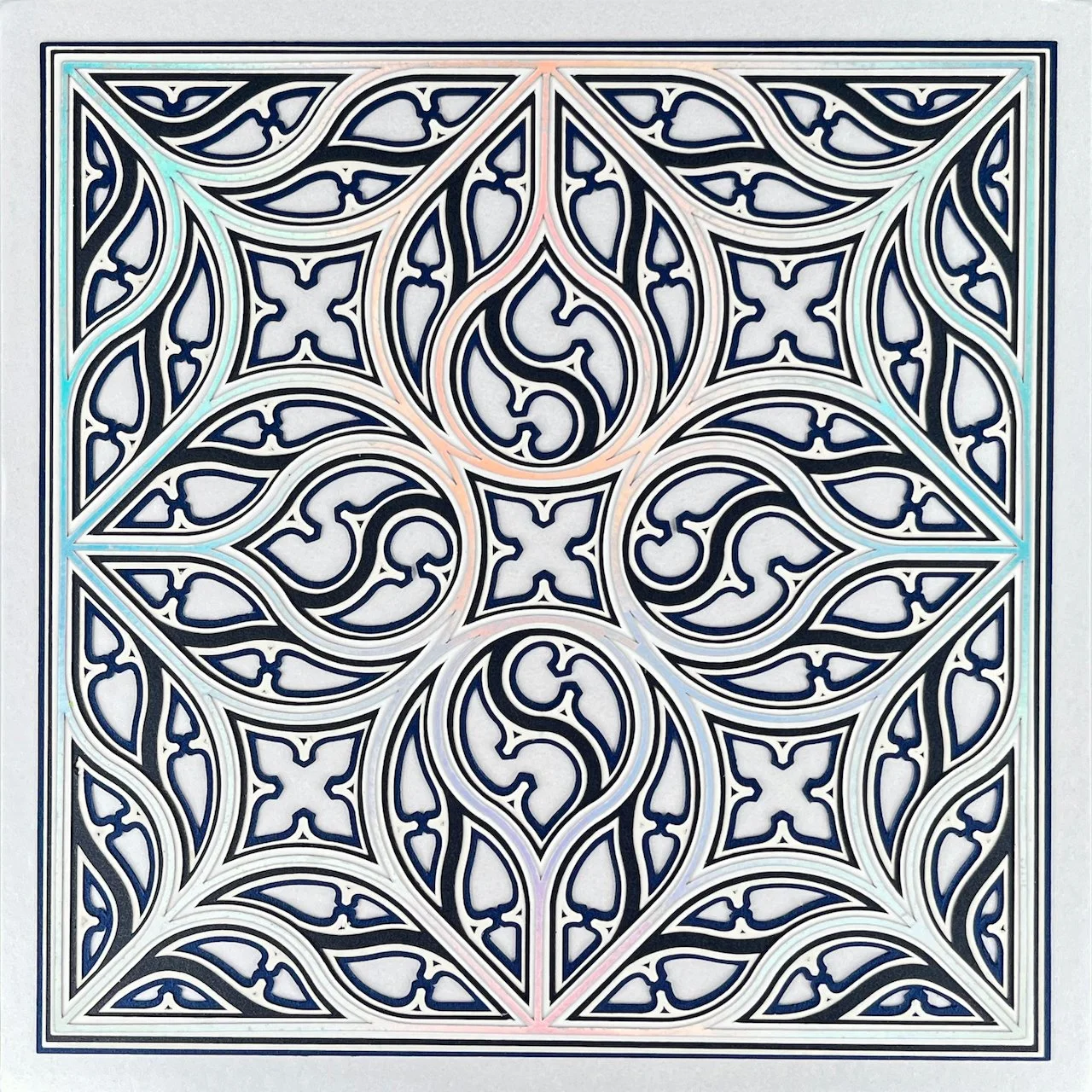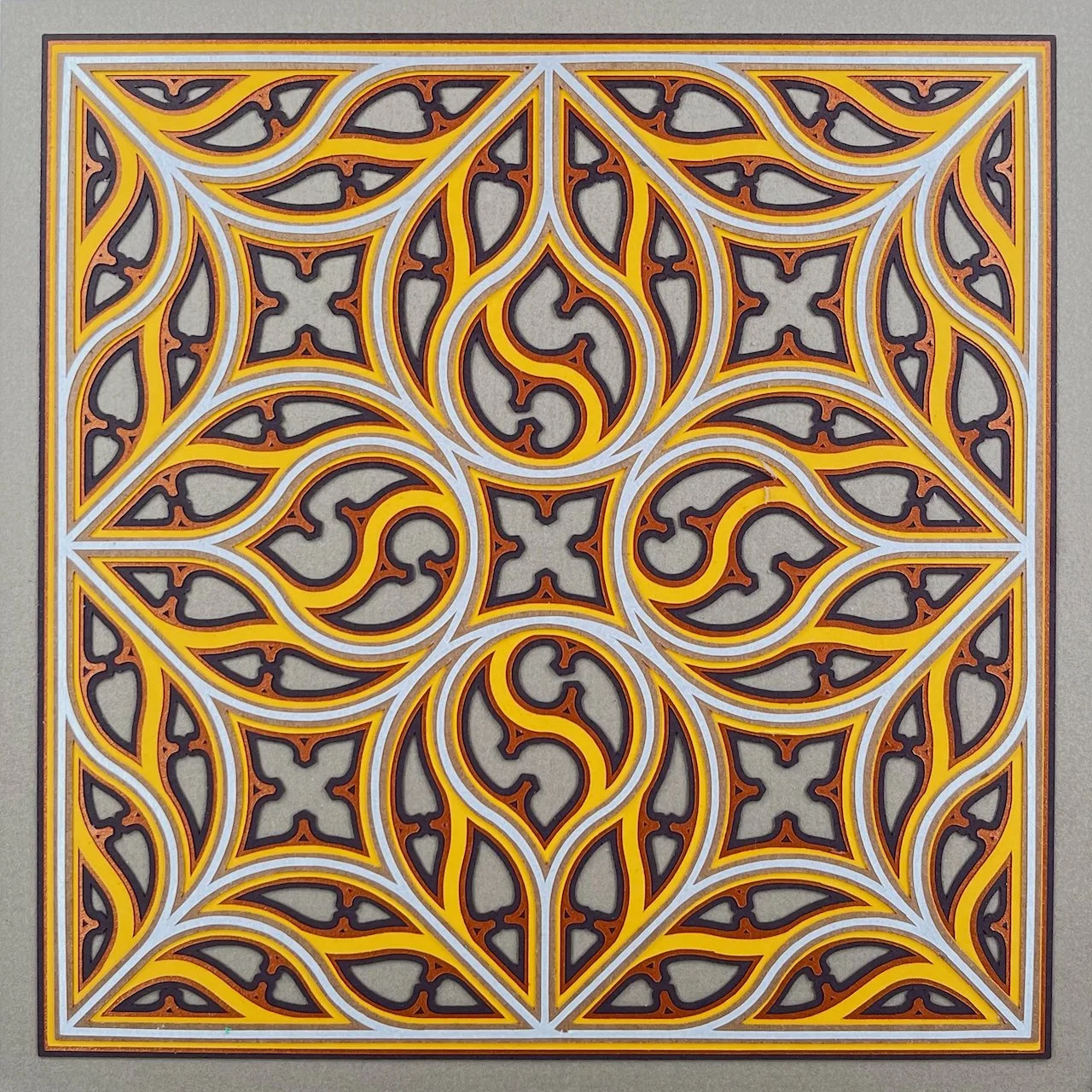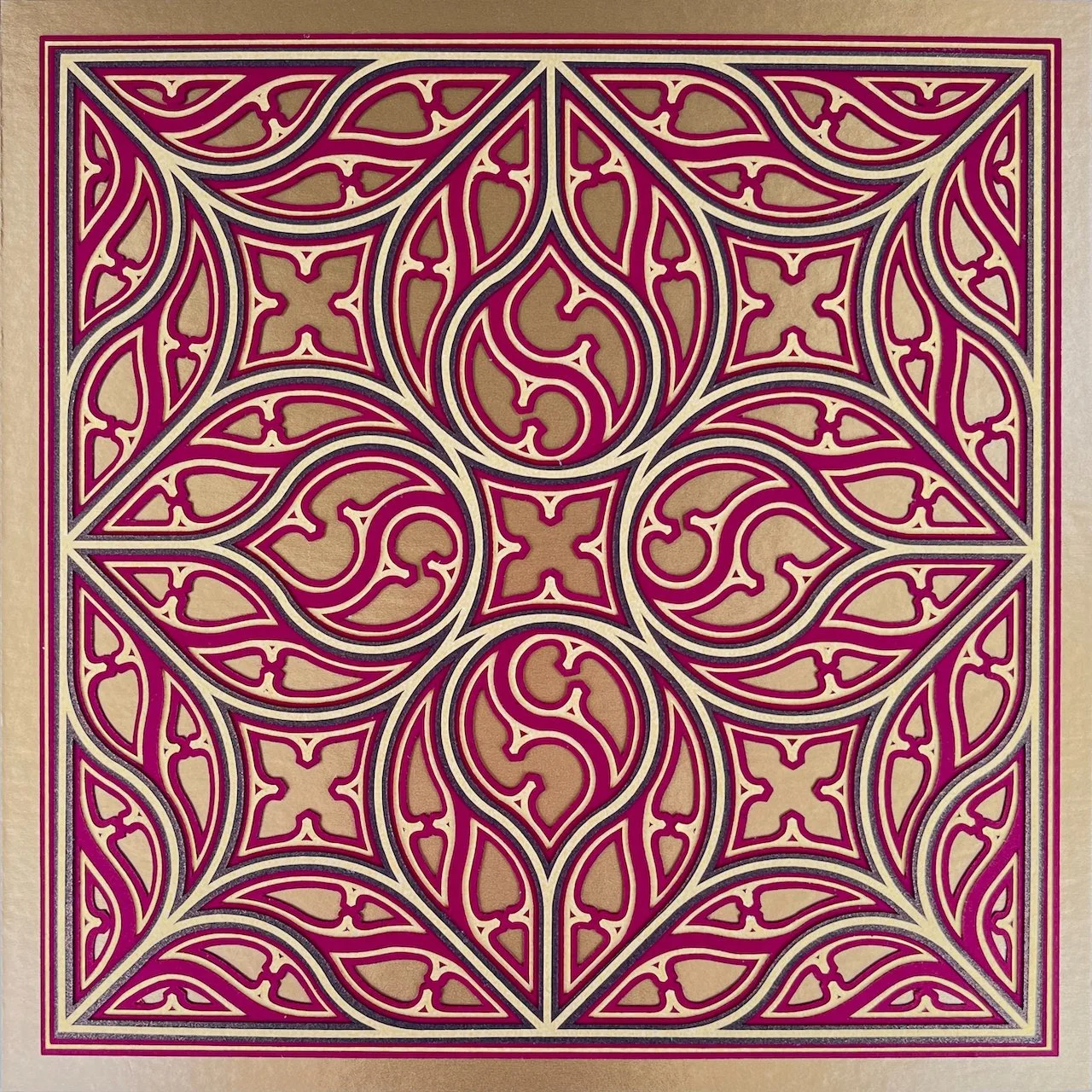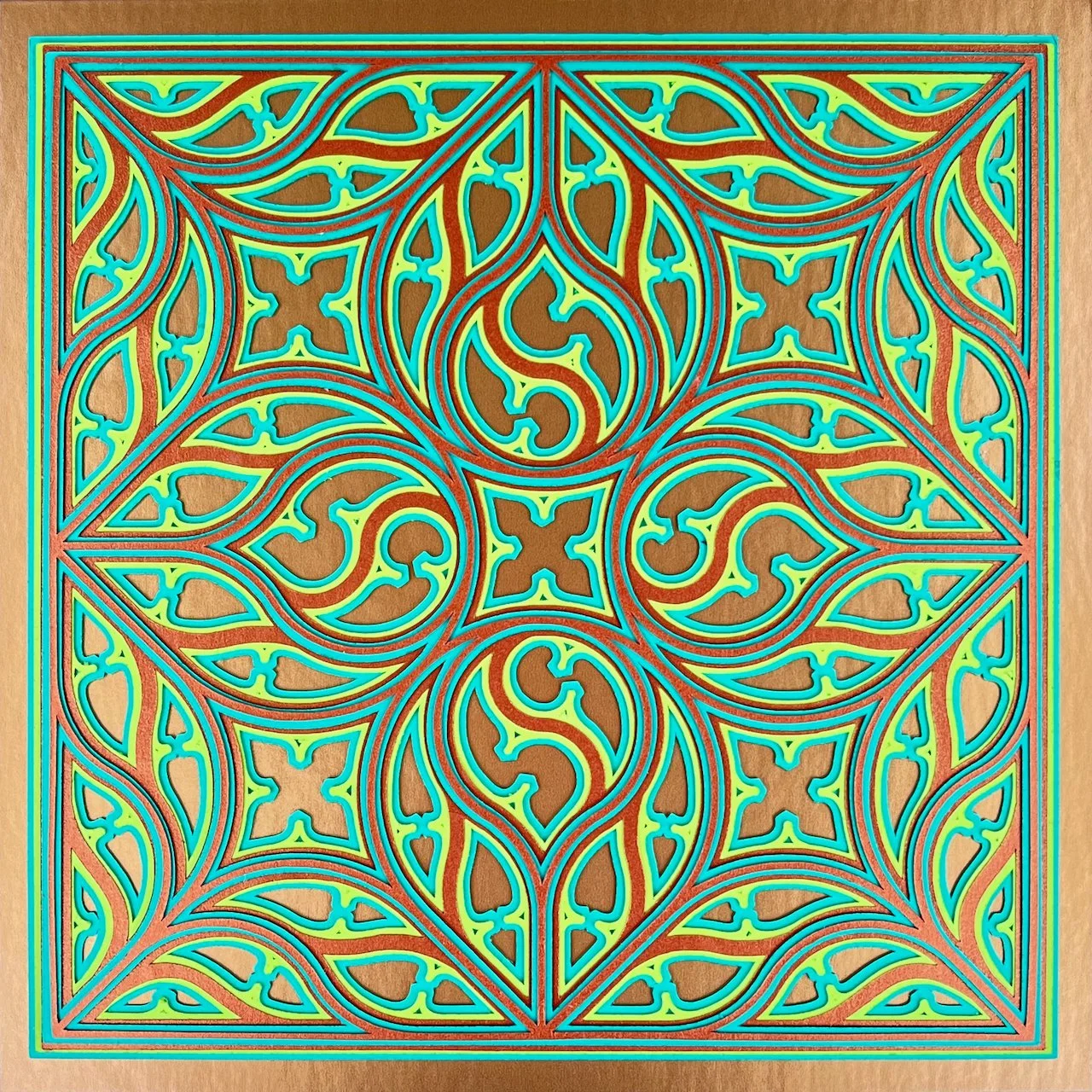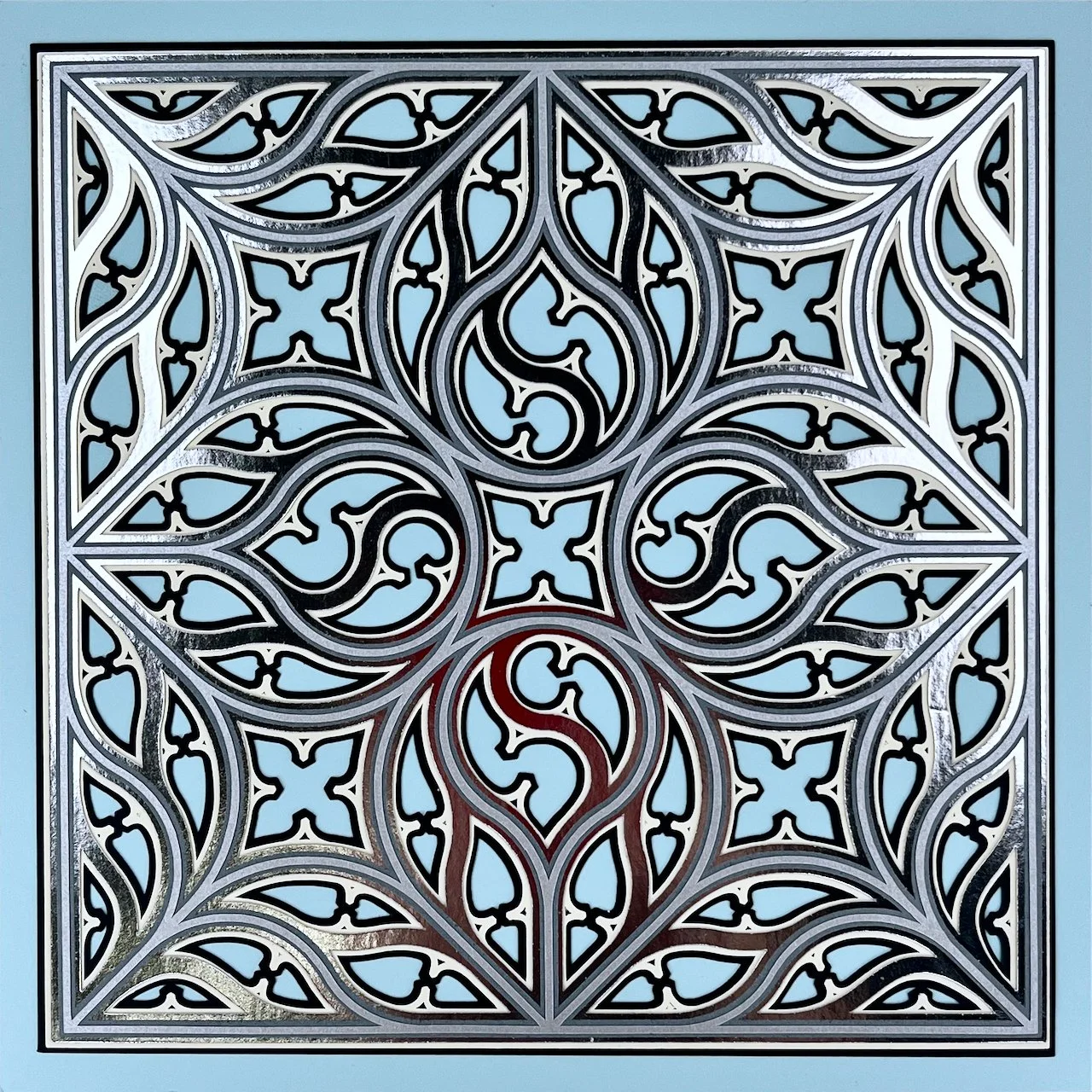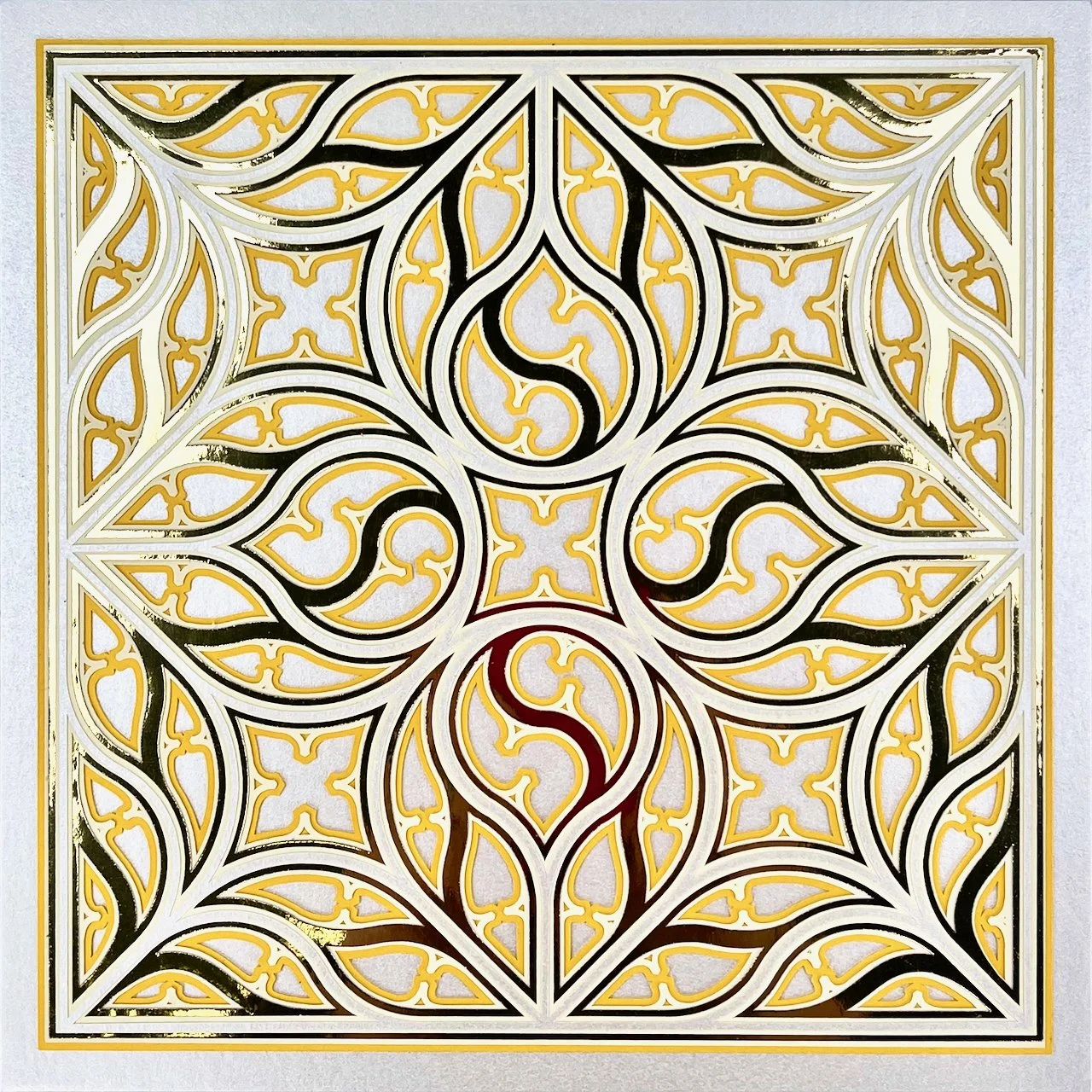With soaring vaults and resplendent stained glass windows, Gothic architecture attempted to recreate a heavenly environment on earth. Elaborating on Romanesque styles, Gothic builders, beginning in the 12th century, further developed the use of flying buttresses and decorative tracery between stained glass windows thus creating interior spaces that dwarfed worshippers and dazzled their senses.
The innovations of Gothic architecture were premised on the ideas developed by Abbot Suger that earthly light contained divine light and that the physical edifice of the church needed to make this concept tangible. Revolutionary transformations of flying buttresses and groin vaulting allowed the inclusion of more stained glass windows in the church’s structure, thus transforming the everyday sunlight into a prism of colors that danced over the surfaces of the stone and reminded worshippers of God’s divine presence.
Most of the panels in this gallery are based on the gothic tracery designs of R.W. Billings (1815-1874).

